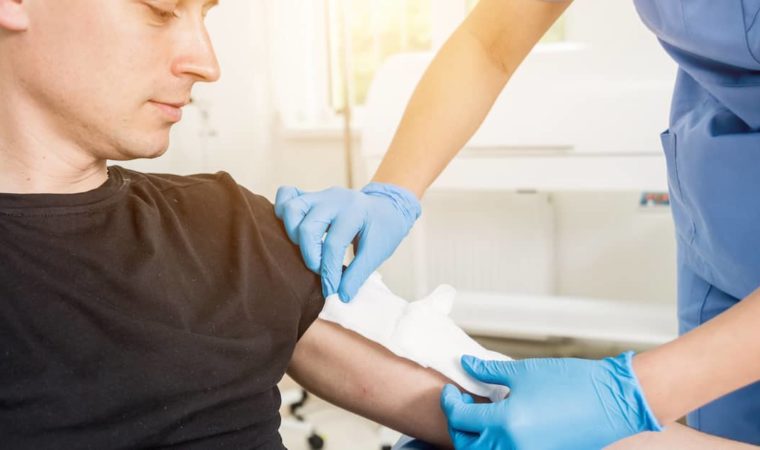
Burns caused by accidents can have life-altering effects. Along with pain and physical limitations, suffering severe burns can have psychological consequences as well.
Survivors of severe burn injuries may be entitled to significant compensation. The compensation you are due will depend in large part on the degree and severity of the burns.
Call the burn injury lawyers of Whitley Law Firm at (919) 785-5000 today if you or a loved one suffered burns in an accident. It won’t cost anything to see if we can help.
Classification of Burns
Medical professionals classify burns in two ways. First, burns are classified by “degree,” which takes into account the depth and size of the burn. Then, based on the degree and other characteristics, a burn can be classified as either minor (or “mild”) or major (or “severe”).
Classification of Burns by Degree
There are three degrees of burns: first, second, and third. The UNC School of Medicine’s North Carolina Jaycee Burn Center defines each degree of burn injury as follows:
- First-Degree Burns – Burns are classified as first-degree burns if they “[o]nly affect the outer layer of skin called the epidermis and cause pain, redness, and swelling.” First-degree burns typically look “like a sunburn with no blistering.”
- Second–Degree Burns – Second-degree burns affect both “the outer and underlying layer of skin.” They typically take on a “red, blistered or open” appearance accompanied by swelling and significant pain.
- Third–Degree Burns – Third-degree burns are the most serious. These burns “[a]ffect all layers of skin . . and sometimes deeper tissue.” The physical characteristics of third-degree burns can include being “thick and leathery in appearance” and appearing “white, deep red, or black in color.”
Each degree of burn may occur as a result of contact or near-contact with fire during vehicle collisions and other major accidents. First, second, and third-degree burns may also be caused by exposure to hot liquids, hot engines, operating equipment and machinery, toxic chemicals, and other workplace hazards.
Minor Burns vs. Severe Burns
Once doctors assess the degree of a burn, they will typically classify the burn as either minor or severe. The UNC School of Medicine’s North Carolina Jaycee Burn Center classifies first-degree burns as minor if they cover less than 5% of the body. (For reference, the palm of the hand represents about 1% of the total surface of the body.)
In contrast, a burn is considered severe in each of the following circumstances:
- The burn covers more than 5% of the body
- The injury is classified as a second-degree or third-degree burn
- The burn affects the airway or the face
Treatment of Burns
Part of the reason for classifying burns as either minor or severe is that those in the “severe” category generally require much more intensive forms of treatment. In many (but not all) cases, first-degree burns will heal with basic first aid. The North Carolina Jaycee Burn Center offers the following tips for treating first-degree burns:
- Cool small burns with water, but cover large burns with a dry sheet
- Clean minor burns with mild soap and water
- Remove clothing before the affected area starts to swell (unless the clothing is stuck to the burn)
- Apply a small amount of antimicrobial ointment and cover the burn with a loose bandage
- Do not soak the wound in ice water
- Do not break any blisters that may form
If clothing sticks to a burn, if the burn injury appears to be infected, or if there is any other cause for concern in relation to what otherwise appears to be a minor burn, it is important to seek medical treatment promptly. Even minor burns can lead to serious complications if not treated properly.
As noted above, treatment options for severe burns can be very different from those for minor burns. In the most severe cases, these burns can constitute medical emergencies. Depending on the severity of a burn, the affected area of the body, and various other factors, treatment for a severe burn may involve:
- Complex wound care
- Skin graft surgery
- Blood pressure monitoring and management
- Intravenous fluids to prevent dehydration and shock
- Treatment for edema, pneumonia, sepsis, and other burn-related complications
Along with these forms of treatment, severe burn injury victims may need other forms of care as well. These include ongoing pain management, physical therapy, occupational therapy, and psychological or psychiatric counseling. In some cases, severe burn victims will need multiple skin graft surgeries. Cosmetic reconstruction may also be necessary to repair permanent scarring or disfigurement.
Contact a Burn Injury Lawyer Today
At the Whitley Law Firm, our attorneys handle burn injury claims in Raleigh and throughout North Carolina. We understand the devastating impact these injuries can have, and our team is committed to providing the care you need and pursuing the compensation you deserve.
The classification of burns will determine the damages you may be entitled to recover. We will work closely with your doctors and other medical specialists to understand the degree and severity of the burn and how the injury will affect your life long-term.


